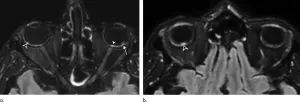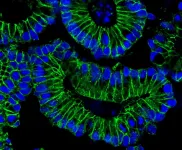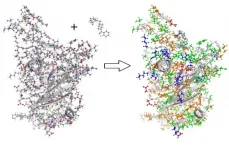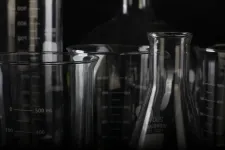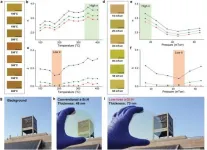(Press-News.org) OAK BROOK, Ill. - Radiomics--the extraction of very detailed quantitative features from medical images--provides a refined understanding of how cocaine use and other risk factors affect the course of coronary artery disease, according to a study published in Radiology. Researchers said the study shows the power of radiomics to improve understanding of not just cardiovascular disease, but cancer and other conditions as well.
Coronary artery disease typically develops over time as plaque builds up inside the arteries. This process, known as atherosclerosis, can eventually lead to life-threatening events like heart attack and stroke.
Historically, imaging techniques like coronary CT angiography provided information on atherosclerosis by describing the degree of stenosis, or narrowing, in the coronary arteries. While measures of stenosis are useful, they are not always the most precise way to assess the risk of an adverse event like a heart attack.
"Some people have very bad stenosis where the vessels are 90% blocked and do fine, while others with only 40% to 50% stenosis die suddenly without warning," said study lead author Shenghan Lai, M.D., M.P.H., professor of epidemiology and public health at the Institute of Human Virology at the University of Maryland School of Medicine and adjunct professor of epidemiology at Johns Hopkins Bloomberg School of Public Health, both in Baltimore. "This shows that not just stenosis but the nature of the plaque itself may play a very important role in risk assessment."
Radiomics is a tool that goes beyond plaque volume to examine a multitude of features apparent in the image but not visible to the naked eye. To perform radiomics analysis, images are run through software that can analyze thousands of features for a more comprehensive risk assessment.
In the new study, Dr. Lai, Márton Kolossváry, M.D., Ph.D., a pioneer in the use of radiomics in cardiovascular imaging, and colleagues assessed whether different cardiovascular risk factors have distinctive contributions to the changes in plaque over time. Risk factors assessed included cocaine use and HIV infection.
The study group included 300 individuals with subclinical coronary artery disease, or disease not yet severe enough to present any symptoms, as confirmed via coronary CT angiography. Changes in 1,276 radiomic features were analyzed over an average of four years follow-up. The data were derived from the Heart Study, a longitudinal investigation of the effects of HIV and cocaine use on subclinical coronary artery disease, which has been funded by the National Institute on Drug Abuse for 21 consecutive years.
Radiomics-based analysis indicated that conventional risk factors, cocaine use, and HIV-infection each have different effects on changes in coronary atherosclerosis over time. Cocaine use was significantly associated with almost a quarter of the radiomics features. HIV infection, in contrast, was linked to only slightly more than 1% of radiomics features. The study also revealed that HIV infection had a more profound effect on coronary artery disease in younger individuals.
"Cocaine use plays an important role in the pathogenesis of coronary artery disease," Dr. Lai said. "Cocaine users with HIV should abstain from cocaine use to lower the risk of coronary artery disease."
The results suggest that rather than having a complex interconnected network of factors contributing to the development of atherosclerosis, the effects of different risk factors may correspond to specific known or unknown pathways of disease progression. This information will likely provide a more complete picture of the state of cardiac health.
"We want to figure out why some people die early, why some die suddenly, and why some people go on and on even if they have very significant fixed disease," Dr. Lai said. "With radiomics, we can use a CT image or an MR image, because these images have more data than just stenosis."
Dr. Lai said the radiomics technology used in the study could have applications beyond cardiovascular assessment, such as cancer and diseases of the lungs.
"The technology is there, that's not the key obstacle," he said. "The key obstacle is that not enough physician-researchers have access to this information."
INFORMATION:
"Contribution of Risk Factors to the Development of Coronary Atherosclerosis as Confirmed via Coronary CT Angiography: A Longitudinal Radiomics-based Study."
Collaborating with Drs. Lai and Kolossváry were Gary Gerstenblith, M.D., David A. Bluemke, M.D., Ph.D., Elliot K. Fishman, M.D., Raul N. Mandler, M.D., Thomas S. Kickler, M.D., Shaoguang Chen, M.S., Sandeepan Bhatia, M.D., and Hong Lai, Ph.D., M.P.H.
Radiology is edited by David A. Bluemke, M.D., Ph.D., University of Wisconsin School of Medicine and Public Health, Madison, Wisconsin, and owned and published by the Radiological Society of North America, Inc.
(https://pubs.rsna.org/journal/radiology)
RSNA is an association of radiologists, radiation oncologists, medical physicists and related scientists promoting excellence in patient care and health care delivery through education, research and technologic innovation. The Society is based in Oak Brook, Illinois. (RSNA.org)
For patient-friendly information on cardiovascular imaging, visit RadiologyInfo.org.
OAK BROOK, Ill. - Researchers using MRI have found significant abnormalities in the eyes of some people with severe COVID-19, according to a study published in the journal Radiology. The study results support the need for eye screening in these patients to provide appropriate treatment and management of potentially severe ophthalmological manifestations of COVID-19.
The COVID-19 pandemic has affected more than 100 million people since it began early in 2020. While the virus primarily attacks the lungs, it has been linked with eye abnormalities ...
Launched in 1988, the Global Polio Eradication Initiative (GPEI) stands out as one of the largest, internationally coordinated global public health major projects conducted to date, with cumulative spending of over $16.5 billion for 1988-2018, according to the World Health Organization (WHO). More than 30 years later, stubborn outbreaks of wild poliovirus still occur in Afghanistan and Pakistan, where cases have been increasing since 2018. The global eradication of polio continues to be an elusive goal.
A special issue of the journal Risk Analysis, titled "Global Poliovirus Risk Management and Modeling," looks at the current status of polio eradication ...
Earth is home to millions of known species of plants and animals, but by no means are they distributed evenly. For instance, rainforests cover less than 2 percent of Earth's total surface, yet they are home to 50 percent of Earth's species. Oceans account for 71 percent of Earth's total surface but contain only 15 percent of Earth's species. What drives this uneven distribution of species on Earth is a major question for scientists.
In a paper published February 16 in the Journal of Biogeography an international team of researchers led by Jacob S. Suissa, Ph.D. Candidate in the Department of Organismic and Evolutionary Biology, ...
Memorial Sloan Kettering Cancer Center (MSK) physicians and scientists presented new research at the 2021 American Society of Clinical Oncology Genitourinary Cancers Symposium held virtually February 11-13. Notably, MSK medical oncologist Robert Motzer, MD, presented encouraging data from a phase III randomized study that assessed two new treatment combinations as first-line treatments that may prolong survival in people with advanced kidney cancer. Dr. Motzer's findings were also published on February 13 in the New England Journal of Medicine.
In this large, international trial involving 200 sites across 20 countries, Dr. Motzer and a team of investigators ...
Using advanced RNA sequencing, scientists have identified two unique subtypes of a prominent mutation present in many patients with Acute Myeloid Leukemia (AML) - called NPM1 - that could help predict survival and improve treatment response for patients whose leukemic cells bear the mutation.
In research published Feb. 16, in Nature Communications, a team led by Princess Margaret Cancer Centre Senior Scientists, Drs. Benjamin Haibe-Kains, Aaron Schimmer and Mark Minden, have discovered that within the NPM1 mutation of AML there exists two unique subtypes, one of which can be effectively treated with drugs already in use.
It is the first study to classify within the common NPM1 mutant form of AML two subtypes, one being "primitive" and the other ...
Most people infected with SARS-CoV-2 are able to recover from the disease at home - even if they might experience very stressful disease progressions. Some have no symptoms at all. But about ten percent of those affected become so severely ill that they have to be treated in a hospital. The assumption that a weak immune system is behind a severe progression is short-sighted. Especially with critical progressions, the immune system works under intense pressure, but does not manage to control the virus.
A Berlin research group has now observed how SARS-CoV-2 uses an immune system defense mechanism to increasingly hijack ...
Computing - Modeling COVID dynamics
To better understand the spread of SARS-CoV-2, the virus that causes COVID-19, Oak Ridge National Laboratory researchers have harnessed the power of supercomputers to accurately model the spike protein that binds the novel coronavirus to a human cell receptor.
These simulations also shed light on the ligand molecules that can inhibit such binding, pointing the way to potential drug therapies.
An ultrafast quantum chemical modeling method provides information about the critical electronic interactions between protein and ligand chemicals, going beyond the classical interaction models that are normally employed in computational drug discovery.
The findings will enable accurate predictions of the performance of currently available inhibitors ...
The University of Kent has led a study highlighting the urgent need for the UK's Government and renewable energy industries to give vital attention to decommissioning offshore wind turbines approaching their end of live expectancy by 2025. The research reveals that the UK must decommission approximately 300 and 1600 early-model offshore wind turbines by 2025 and 2030, respectively.
Urgent focus is needed now to proactively use the remaining years until turbines installed in the 1990s and early 2000s are no longer safely functional in 2025, to prevent safety lapses, potentially huge costs and the irretrievable loss of the skillset required for safe decommission.
The research shows that these original turbines have an approximate lifetime of 20 to 25 years, but this expectation ...
Atropisomers are a class of stereoisomers (chemical compounds that differ in spatial arrangement of atoms) arising from restricted rotation around a single bond and have various applications in chemistry. To date, most research on atropisomers has focused on "biaryl atropisomers" (due to the rotational restriction around a carbon-carbon bond), but it is also possible for atropisomers to arise from rotational restrictions around a nitrogen-carbon (N-C) bond. These N-C axially chiral compounds are found in various natural products and bioactive compounds and thus have promising applications in medicine ...
A POSTECH research team has developed a transparent amorphous silicon that transmits visible light - which permits us to distinguish the colors of objects - enabling the development of paper-thin lenses usable in head-mounted displays (HMD) that show virtual and augmented reality images in real time.
A research team - led by Professor Junsuk Rho of POSTECH's mechanical engineering and chemical engineering departments, and Ph.D. candidate Younghwan Yang and Dr. Gwanho Yoon of the Department of Mechanical Engineering - has developed visibly transparent amorphous silicon by improving the plasma enhanced chemical vapor deposition (PECVD) method, a practice widely used by Korean display manufacturers. ...
